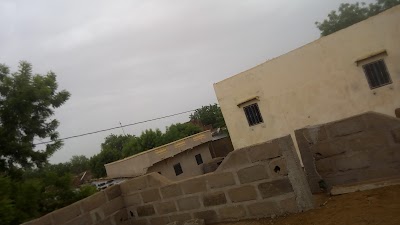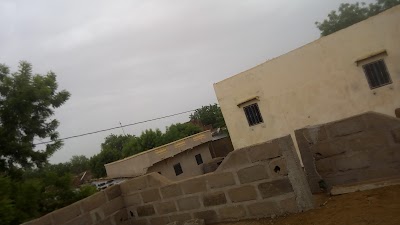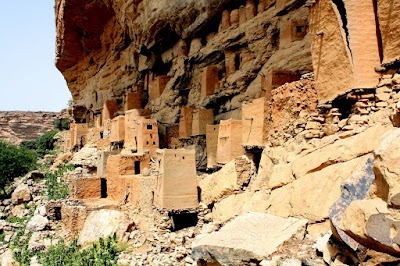Great Mosque of Ségou (Grande Mosquée de Ségou)
Related Places
Overview
The **Great Mosque of Ségou**, located in the heart of the Ségou Region in Mali, is not just an architectural marvel but also a vibrant cultural hub that offers a fascinating glimpse into the rich Islamic heritage and traditional Sudano-Sahelian architecture of West Africa. With its towering minarets and intricate façade, this ancient mosque invites visitors to explore a significant chapter of Malian history and spirituality.
Constructed in the early 20th century during the French colonial period, the Great Mosque of Ségou stands as a testament to the enduring Islamic faith and the remarkable craftsmanship of the local Bambara people. Dating back to 1920, the mosque showcases the traditional Sudano-Sahelian design, characterized by sun-baked mud bricks and wooden support beams known as toron. This construction technique not only ensures structural integrity but also symbolizes a harmonious relationship between nature and human ingenuity, as all materials are locally sourced and environmentally friendly.
One of the first features that capture the attention upon approaching the Great Mosque is its striking façade. The tall, tapered minarets are adorned with rows of wooden toron, which serve as permanent scaffolding and play an essential role during the mosque’s annual replastering festival. Known in the local Manding language as "the crepissage," this communal event sees residents come together to renew the mosque's mud coating, preserving it against the harsh climate. This tradition not only safeguards the mosque’s physical structure but also nurtures a sense of community and cultural continuity.
The mosque serves not only as a place of worship but also as a bustling center for education and community gatherings. Historically, it has been pivotal for Islamic learning in the region, housing madrasas where young students memorize the Quran and study Islamic jurisprudence. Visitors often have the chance to observe these activities firsthand, gaining a deeper understanding of the mosque's integral role in daily life and its contribution to preserving Islamic knowledge through generations.
Beyond its religious and educational significance, the Great Mosque of Ségou is an exquisite example of Malian artistry. The mudbrick walls feature natural, sculpted forms that create a visually stunning texture, transforming with the play of light and shadow throughout the day. The mosque is adorned with geometric patterns and motifs, symbolic in Islamic art, representing infinity and the omnipresence of Allah. These intricate designs, combined with the mosque’s grand scale, leave visitors in awe of the artisans’ skills and their artistic vision.
The mosque’s location in Ségou is steeped in historical interest. Once the capital of the Bambara Empire and later an important administrative center during French colonial rule, the mosque stands as a focal point in the local landscape. It encapsulates the fusion of African and Islamic cultures over the centuries, with the nearby Niger River providing a picturesque backdrop, making it an ideal spot for photographers and history enthusiasts alike.
For those looking to immerse themselves in the local culture, the best times to visit are during the mosque’s replastering festivals or religious celebrations like Eid. These events offer unique opportunities to witness vibrant community life and engage in local customs and traditions that have been preserved for centuries. Local tour guides are typically available to share insights into the significance of various elements of the mosque, enriching the visitor experience with historical anecdotes passed down through generations.
In recent years, the Great Mosque of Ségou has also become a symbol of heritage preservation. Both local authorities and international organizations have undertaken efforts to maintain the structural integrity and historical authenticity of this cultural landmark. These conservation initiatives ensure that the mosque remains a living monument, continuing to inspire and educate future generations.
In conclusion, the **Great Mosque of Ségou** is more than just an architectural wonder; it stands as a living testament to the rich cultural and historical tapestry of Mali. Its enduring presence and the surrounding communities offer a unique glimpse into the traditions, beliefs, and artistic expressions of the region. Whether you are a history enthusiast, an architecture aficionado, or a cultural explorer, a visit to the Great Mosque of Ségou promises to be a deeply enriching experience.








